During the war in Gaza, when the Mollah regime in Iran tried to compel the Iranian people to show gestures of support for Hamas and animosity toward Israel, the only Iranian community that openly opposed Israel and voiced support for Hamas was that of the Iranian Jews, in demonstrations and gatherings in synagogues (see Figures 1 and 2).

Figure 1. Iranian Jews condemning Israel in the War in Gaza. Source: “Anti-Zionist Demonstration of Jews in Tehran,” ParsToday [in Hebrew], October 30, 2023.
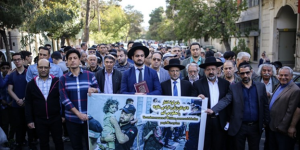
Figure 2. Protest of Iranian Jews in Tehran against Israel’s war with Gaza, October 20, 2023.
The Islamic Republic of Iran arms Hezbollah and Hamas, tries to exert control over the entire area, and prioritizes the destruction of Israel. However, it does not mistreat Iranian Jews in any way. The official stance of the Islamic Republic, also stated in Khamenei’s book “Felestin” (Palestine), is that there are both good and bad Jews, just like any other group of people, but all criminals, thieves, rapists, robbers, and so forth have all gone to Israel. Therefore, the Islamic Republic opposes Zionists but does not harbor any animosity toward Jews.
The Islamic Republic does not have any antisemitic laws and has not had any since its establishment. In fact, such laws only existed until the early 20th century. Jews in Iran have the freedom to study the Torah, produce alcohol (which is prohibited for Muslims), work in any occupation, study in universities, and so forth. Jews, Christians, and Zoroastrians are allocated reserved seats in the Majles, the Iranian parliament. When an Iranian Jew votes for parliament, one ballot is for a provincial representative and another ballot is for the Jewish representative.
Religious minorities who are Muslim or originate from Islam do not enjoy the same rights: Sunni Muslims, who also belong to ethnic minority groups in Iran, face discrimination, and Baha’is are persecuted. Shiite Muslims, who form the majority in Iran but who oppose the regime, are the most persecuted, including clergy who are imprisoned for opposing the regime.
Jews, Christians, and Zoroastrians are religious groups that do not threaten Shiite hegemony. The persecution of Baha’is, discrimination against Sunnis, and imprisonment of Ayatollahs occur because these groups offer an alternative to the Islamic Republic’s interpretation of Shiite Islam. Sunnis are Muslims, and the Bahai religion, which emerged from Shiite Islam in the 19th century, is seen as closer both in time and in theological lineage, making it appear even more threatening.
The very notion of an Islamic Republic is controversial. According to the sixth imam, Ja’far, it was believed that clergy should not rule. Furthermore, Khamenei’s ayatollah title was obtained in an improper manner. Many ayatollahs do not recognize him as a legitimate ayatollah. Those living outside Iran openly criticize him, while those within Iran who oppose the union of church (mosque) and state, the system of rule by a supreme clergy or Khamenei himself, face isolation at best. Their followers are prohibited from contacting them, and in more extreme cases, they are imprisoned without access to necessary medication and proper treatment.
The closer a religious group adheres to the dominant belief system without fully adopting it, the more they are persecuted. As a result, Jews, Christians, and Zoroastrians are hardly persecuted at all, unless they have converted from Islam or are priests or rabbis who have conducted the conversion of Muslims to another religion. In such cases, the clergy could be executed. It should be noted that Jewish rabbis in Iran do not perform conversions at all. Converting to Zoroastrianism is very difficult. However, because it is the religion of their ancestors, conversion to Zoroastrianism is tolerated.
During the war in Gaza, many social media bots of the Islamic regime, especially on X, have been extremely active. If one were to judge by the trending topic من هم باید برم [“I also have to go (fight Israel alongside the Hamas”)] on social media, it would seem that the majority of Iranians support Hamas and oppose Israel. However, the Iranian street has been less cooperative. They have not participated in demonstrations in Tehran, nor in a moment of silence in Azadi Stadium, nor in a conference called “Gaza, the Mighty Oppressed” in Imam Ja’far Mosque in Palestine Square in Tehran, featuring speeches by medium-ranking politicians. The pictures from this mighty conference showed a very small audience (see Figure 3).
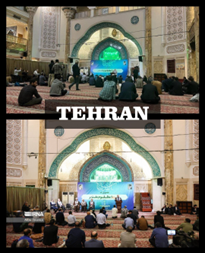
Figure 3. The conference of “Gaza, the Mighty Impressed,” in Tehran. Source: IRNA News Agency.
It should be noted that speeches by high-ranking politicians have a larger audience because schools and workplaces force students and workers to attend. Additionally, the allure of fruit juice and sandwiches attracts an audience looking for free food. When there are not enough people to create an impressive turnout, pictures from other events that drew larger crowds, such as Qasem Soleimani’s funeral, are used.
Since the Iranian people did not cooperate in demonstrating support for Hamas, religious minorities were called upon. The leaders of the Jewish and Christian communities held a joint press conference denouncing Israel and expressing their support for Hamas (see Figure 4).
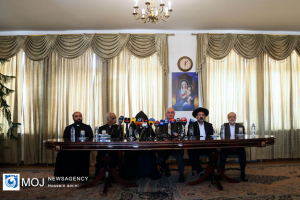
Figure 4. Press conference of Jewish and Christian clergy denouncing Israel and expressing support for Hamas, October 2023. Source: MOJ News Agency. Photo by Hossein Amini.
Does this mean they truly oppose Israel? Instead of answering, let us rephrase the question: What would happen if they said no?
Referring to Iranian Jews and Christians as one group is not coincidental. Being a religious minority in a country not known for its human rights is equivalent to being held hostage: Their daily lives are relatively comfortable, but they are propaganda hostages.
Treating the Jews well also benefits the Islamic Republic’s West-facing propaganda. It supports the official stance of the Islamic Republic (Jews good, Zionists bad) and holds back claims of antisemitism or racism.
Contrary to common opinion in the West, the Islamic Republic is very concerned with its worldwide image. In fact, Masoud Pezeshkian’s election as president in July 2024 was facilitated and enabled because only a non-fundamentalist president may be able to improve the Islamic Republic’s image and relations with the West. For the same reason, the regime strives to present itself as a democracy with minority rights.
It cannot be stated with full confidence that Iranian Jews denounce Israel only because they are threatened. Radical left Jews in the United States also support Hamas and denounce Israel without any threat. However, Iranian Jews are far from being radical left; rather, they are highly conservative. The ultra-conservative side of the Jewish spectrum also has anti-Zionist radicals such as Neturei Karta, who oppose the very existence of the State of Israel. This is exactly the narrative adopted by Iranian Jewry when partaking in the propaganda of the Islamic regime against Israel, whether it is for Iran or for foreign eyes: The State of Israel was established by sin. Zionism is opposed to Judaism because establishing a Jewish state before the advent of the Messiah is “hastening the Messiah,” which is considered sinful.
The following message, in Hebrew, was sent to the Zionists and Netanyahu by Yehuda Gerami, the chief rabbi of Tehran, through the Islamic Republic of Iran Broadcasting (IRIB), after explaining to the host that Hebrew is the sacred tongue, which the Zionists have abused for everyday purposes:
We, the Jews of Iran, want to send this message to the Zionists, first and foremost Netanyahu. Know that you, Zionists, do not represent Judaism or the Jewish people. You only represent an idea and political movements whose ideas and values are in contrast with the ideas and values of our holy Torah and the Jewish religion. We, the Jews of Iran, denounce and strongly condemn your deeds and aggression and declare and stress to the whole world that there is a big difference between Judaism and Zionism.
Despite Iranian Jewry’s open public support of the Islamic Republic and the authorities’ distinction between them and the Zionists, some Iranians do not distinguish between the two. During the Fast of Esther, a day before Purim 2024, Iranian Jews made their traditional pilgrimage to the tomb of Esther and Mordechai in Hamadan and were shocked to see a flag of Palestine on the site’s fence.
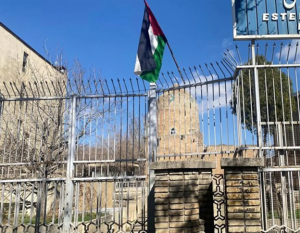
Figure 5. Photograph of the Palestinian flag at the Mausoleum housing the tomb of Esther and Mordechai in Hamedan, March 2024. Source: Social media.
This was not the first nor the last time that supporters of the regime held demonstrations against Jews and/or Zionists at the Mausoleum of Esther and Mordechai in Hamadan. In October 2023, a demonstration against the “Zionist crimes in Gaza” took place in front of the mausoleum. Palestinian and Basij militia flags were displayed and set on the Mausoleum’s fence, while Israeli flags were burned (see Figures 5 and 6). In April 2024, after Israel assassinated seven high-ranking Islamic Revolutionary Guards Corps officers in the Quds Force headquarters next to the Iranian embassy in Damascus, unknown civilians threw a Molotov cocktail into the Mausoleum’s yard as a spontaneous act of revenge.
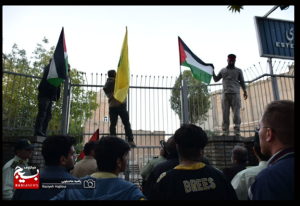
Figure 6. Photograph of the flags hoisted up during the demonstration held outside the Mausoleum, October 2023. Source: BasijNews. Photo by Razieh Hajiloui.
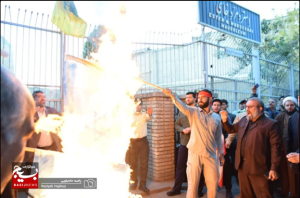
Figure 7. Photograph of regime supporters burning the Israeli flag outside of the Mausoleum, October 2023. Source: Basij News. Photo by Razieh Hajiloui.
The earliest demonstration in front of the Mausoleum occurred in 2011, when protesters burned the Israeli flag and hung a banner on the Mausoleum’s fence that read “The Holocaust of 77,000 Iranians,” written in blood-red letters (see Figure 7). The demonstration was in protest of a legendary event that took place 2,500 years ago, in which Jews were said to have killed over 75,000 people in self-defense after learning that Haman, a high-ranking official in the Persian court, had planned to kill all the Jews in the empire. The protesters demanded that the term زیارتگاه (pilgrimage place) be expunged from the Mausoleum’s sign and that the Mausoleum itself be removed from Iran’s list of heritage sites.
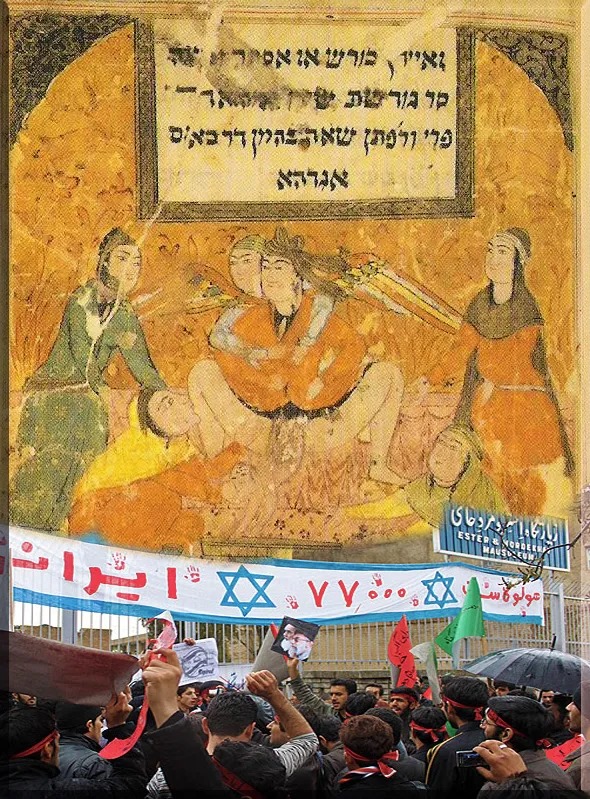
Figure 8. Esther giving birth to Cyrus, Bottom: the 2011 demonstration. Source: Xerxes, Ars Luminis cc-by-sa
According to my sources in Hamadan, the demonstrators were from out of town, as Hamadanis revere the place. Thus, the term “pilgrimage place” was removed from the sign to satisfy their demand but was later added back at the request of Hamadani citizens. Nonetheless, pictures from the 2023–2024 demonstrations show an entirely new sign without the term.

Figure 9. On the left, without the term “pilgrimage place,” and on the right, with the term.
In October 2023, around the same time as the demonstration in front of the Mausoleum of Esther and Mordechai, a demand began circulating on social media to convert the site into a public place. This did not mean opening up the Mausoleum to Muslim pilgrimage as well (although until the 2011 demonstration, visiting the tomb of Esther also helped Muslim women conceive), but rather transforming it into a museum documenting the crimes of Jews and Zionists against Iran and Muslims. The goal was to draw a direct line between blood thirsty Esther and Mordechai in 475 BCE to present-day blood-thirsty Zionists and their actions in Gaza.
Following the demonstration and demand, the second page of a letter by Dr. Homayoun Sameyakh Najaf Abadi, the Jewish representative in the Majles, started circulating on the web. Journalist Roi Kais initially posted it on Israeli social media. Since I could not locate the first page of the letter, the addressee and subject remain unknown, although the content suggests it was sent to Iran’s minister of interior. The header, footer, and signature, as well as the content of the letter, make sense in their context. The letter is dated Mehr 28 (October 20) and reads as follows:
Unfortunately, in the past few days we have been witnessing a merciless attack by this regime [the Zionists] on the defenseless people of Gaza. The Jewish community in Iran, like all the freedom seekers in the world, and like the rest of their compatriots, has experienced great sorrow and grief due to the killing of the defenseless children, women, and men in that city.
But unfortunately, unaware people, in their emotional turmoil and lack of awareness of the difference between the religion of Moses the Prophet and Zionism, have dishonored some members of this Iranian community and/or their holy places.
An example of this is the demonstration held on Mehr 27, 1402 (October 19, 2023) near the tombs of Esther and Mordechai in Hamadan, one of the holiest places for Iranian and world Jewry.
It is therefore requested from your honor to make an effort as in the past, in accordance with the responsibilities of the ministry, to protect the safety of the holy facilities, synagogues, schools, local organizations, and other places of the Jewish community throughout the country. We see the recent event in Hamadan as a serious warning.
Obviously, the responsibility for anything happening to Jewish centers in Iran will lie with the same respectable ministry.
I thank your honor in advance for your attention.
Finally, I wish longevity and health to the Supreme Leader and ever-growing success to all office holders in the sacred government of the Islamic Republic of Iran.

Figure 10. The second page of the letter signed by Dr. Homayoun Sameyakh Najaf Abadi, the Jewish representative in the Majles.
Esther and Mordechai’s Mausoleum and the story of “Esther and Mordechai the mass murderers” is where the regime cannot restrain its more fundamental supporters. A favorite skit by the Israeli comedy show Eretz Nehederet (“A Wonderful Country”) depicts the Shushan and Heroism Remembrance Day ceremony, which obviously does not exist in present-day Iran. However, while the demonstrators do not represent mainstream public opinion in Iran, and despite the fact that most Iranians have proven to be pro-Israeli, especially after October 7, 2023, many indifferent or pro-Israeli Iranians still believe the story told in the Book of Esther. Specifically, they believe the version told every year in YouTube videos, television programs, blogs, and regime-sponsored media outlets that during Purim, Jews celebrate Esther and Mordechai’s killing of 77,000 Iranians. Many Iranians I have met online or in person have told me, “I really don’t understand why they’re making such a fuss about the Book of Esther. It’s been 2,500 years. We’ve forgiven you.”
The biblical Book of Esther is the only source for the events described in it. By analyzing its language, we can estimate that it was composed around two centuries after the reign of Xerxes I (biblical Ahasuerus, Old Persian Khshayarsha), when the nation of Israel needed consolation and missed the Persian Empire. The next mention of the same story occurs a few centuries later, in Flavius’s Antiquities and in the Greek translations of the Bible, such as the Septuagint and Alpha translation, each of which has additions and changes, suggesting the story had or evolved into several versions.
Therefore, the main source of the antisemitic story that Esther and Mordechai were mass murderers is the Book of Esther in the Bible. The second source is several Quranic verses that say the Jews are liars who make up things and distort the facts. The inevitable conclusion from these verses is that the Jews have lied about the Purim story as they tell it, prompting “the real” story. Several figures have promoted this narrative, most prominently fundamental political analyst Ali Akbar Raaefi-Pour. The “real” story, as told since at least the 1940s, gained significant attention following the publication of Abdollah Shahbazi’s book titled زرسالاران یهودی و پارسی –translated as Plutocracy (with the literal translation of the title being “The Jewish and Persian Plutocrats”). This extremely antisemitic and anti-Iranian book (Iran is the number one enemy of the Islamic Republic and vice versa) was published in five volumes in the late 1990s and early 2000s.
This is the “real” story:
Khashayar (Xerxes, Ahasuerus) was a real king who reigned between 486–465 BCE (true so far, TEG). Mordechai the Jew was his senior advisor and cunningly lured the king into banishing Queen Vashti, having convinced him to invite her naked to a feast for drunken men, which was clearly an illegal command in the Achaemenid Empire (inviting even modestly dressed noble women to a drunken men’s feast was obviously not permitted—TEG). Queen Vashti refused and was banished as a result. It should be noted that identifying Memuchan as Mordechai is an innovation of antisemitic Iranian sources.
According to the story, Mordechai then took this opportunity to introduce Xerxes to his trouble-maker cousin, Esther. The king falls head over heels in love with her and she becomes his bedmate, unaware that this is all part of Mordechai’s scheme.
Meanwhile, the minister Haman observed that the Jews harassed and oppressed all the other nations within the empire. He decided they should be expelled and convinced the king to do this. However, the Jews falsely accuse Haman of wanting to kill them, but it’s not true. It’s only because Jews became a real oppressing power over all other nations.
Then Mordechai, with the help of Esther, receives an order from Xerxes to kill all Iranians. They kill 77,000 Iranians. This event is commemorated during the Jewish holiday of Purim and is also known as Jashn-e Irani-Koshi جشنِ ایرانیکشی (the Holiday of Killing Iranians). On this day, the Jews sing, dance, and rejoice at the death of 77,000 Iranians. All of this takes place on the 13th of Adar (this is the last true statement—TEG); therefore, we leave our homes on the 13th of Farvardin (a holiday that takes place on April 1 or 2) due to the collective memory of the Jews coming to kill us. In addition, the Jews also eat symbolic body parts of Iranians (hamantashen are called oznei haman or “ears of Haman” in Hebrew—TEG), which in the past were made with the blood of Iranian children.
The Esther and Mordechai Mausoleum reveals the sad truth: Although the Islamic Republic’s official stance, as well as that of the Jewish community in Iran, make a clear distinction between abhorrent Zionism and the sacred religion of Moses, demonstrations in this holy place expose the strong anti-Semitic sentiment among regime supporters: The tomb has become the place for demonstrations and acts of civil retaliations against Israel, and the legend of Esther and Mordechai is retold to arouse hatred towards Jews regardless of their obedience and compliance with IR propaganda.






